War is not only a military act performed, but an expression of the conflict of cultures.
More often than not, wars result from multiple causes that may be political, economic, or driven by geographical considerations. However, the birth of Bangladesh has proven that culture is yet another fundamental cause, and had become a tool of organized warfare.
Religion was used as glue during the construction of Pakistan so that the multi-ethnic people – Punjabis, Sindhis, Baluchis and Bengalis – irrespective of their different cultures, could be kept together. Seeing Pakistan increasingly at war with itself, Salman Rushdie, in his controversial book Shame, described it as “a failure of the dreaming mind perhaps the place was just insufficiently imagined.”
Samuel Huntington famously said that “fault lines between civilizations will be the battle lines of future.” According to him, at the broadest level individuals belong to a civilization with which they can identify. East Pakistanis intensely identified themselves as Bengalis and “Bengaliness” represented their culture not religion. In the instant case, in a pluralistic society like Pakistan, “when two cultures collide, does one flee from other, accommodate it, ignore it, absorb it, yield to it, or try to destroy it?”
Creation of Pakistan proved Clausewitz right in that war is not an act performed by military men alone but is an expression of the conflict of ideas, objects, and the way of life of an entire society intertwined with those of another society.
Creation of Pakistan
While analyzing the genesis of Pakistan, one finds that the idea of a separate homeland for Hindus and Muslims was hovering around in some form or the other since the inception of the Muslim League in 1906. In 1930, the poet and philosopher Mohammed Alama Iqbal, while arguing for a separate Muslim state, remarked in his presidential address in the Muslim League Annual Session at Allahabad that the formation of a consolidated north west Indian Muslim state appears to be the final destiny of the Muslims at least of north-west India. It is interesting to note that Iqbal, in his scheme for a Muslim state, did not mention Bengal (east Bengal); nor did Chaudhuri Rahamat Ali, a student at Cambridge, who coined the word Pakistan an acronym to denote “P” for Punjab, “A” for Afghanistan, “K” for Kashmir, “S” for Sind and “Tan” for Balochistan.
The central government, in its attempt to de-Sanskritize the Bengali language – derived from Sanskrit (Brahmi) – undertook a program to teach Bengali through the Arabic script. Students of the University of Dhaka protested vehemently.
During the Muslim League Annual Session at Lahore in 1940, the chief minister of Bengal, A.K. Fazlul Haq, had moved a resolution stating that the areas in which Muslims were numerically in a majority, as in the northwestern and eastern zones of India, be grouped to constitute independent states in which the constituent units shall be autonomous and sovereign.
The crux of the Lahore Resolution was the formation of autonomous states for Muslim majority areas of India but not the amalgamation of these areas to form a separate country. Muhammed Ali Jinnah, in this session mooted his idea of the two nation theory by making an emphatic statement that Hindus and Muslims belong to two different civilizations based on conflicting ideas.
It was only in 1946 during the Muslim League Legislatures Convention held in Delhi that the concept of a single state of Pakistan comprising both the north western and eastern Muslim majority areas of the undivided British India was endorsed. Geography of India and Pakistan was decided by Sir Cyril Radcliff. Thus, Pakistan, born on the premise that uniformity of religion, will one day overcome the impediments created by the diversity of culture.
Culture Under Attack
Jinnah, during his very first address to the constituent assembly on August 11, 1947, stated: “You may belong to any religion or caste or creed – that has nothing to do with the business of state. We are starting with this fundamental principle that we are all citizens and equal citizens of one state.”
Jinnah’s proclamation notwithstanding, during the National Education Summit in Karachi the same year, it was proposed that Urdu be the sole state language and be used in the media and schools. It was perceived that Urdu is an Islamic language and it will help coalesce the nascent nation. The Pakistan Public Service Commission removed Bengali from the list of approved subjects. Bengali was also removed from currency notes and stamps. Public outrage spread, and a large number of Bengali students met in the University of Dhaka campus on December 8, 1947, demanding Bengali to be made an official language. Dr. Shahidulla, in his presidential address at the East Pakistan Literary Conference on December 31, expressed rather forcefully: “While it is fact that we are Hindus or Muslims, the more important fact is that we are Bengalis.”
Ironically to make matters worse, on March 22, 1948, Jinnah, in his speech at the Race Course, Dhaka, declared that Urdu will be made the state language of Pakistan, even though only 7.2 % population of Pakistan spoke it. On February 21, 1952, five young men were gunned down in Dhaka by the police for protesting against the measure and demanding Bengali to be included as one of the national languages. The Language Movement (Bhasha Andolan) ignited great nationalistic spirit. It gave birth to the soul stirring and much inspiring poem:
“Can I forget the twenty first of February
Incarnadined by the love of my brother?
The Twenty first of February, built by the tears
Of a hundred mothers robbed of their sons,
Can I ever forget it?”
The establishment in Pakistan failed to appreciate that East and West Pakistan were culturally distinct. It should have realized that “nations are made up of human beings where deep feelings about such questions as their languages can not be safely ignored. Pakistan’s attempt to impose uniformity where diversity was desirable had unfortunate consequences.”
The central government, in its attempt to de-Sanskritize the Bengali language – derived from Sanskrit (Brahmi) – undertook a program to teach Bengali through the Arabic script. Students of the University of Dhaka protested vehemently. The Ayub Government also banned poetry of Rabindranath Tagore for being non-Muslim, but Tagore was a cultural icon and to ban Tagore was to ban Bengali culture. His Amar Sonar Bangla ami tomai bhalobashi (“My Golden Bengal I Love You”) – now the national song of Bangladesh — and many of his other work were used during the freedom struggle by cultural activists. Prominent among them was the Bangladesh Mukti Sangram Shilpi Sangstha (BMSSS) or The Choir of Freedom. Artists and singers of Bangladesh formed this cultural platform to raise funds, to help refugees and at the same time to motivate others to join the war. The troupe visited refugee camps and liberation army training sites to boost the morale and encourage people to join the war.
The Language Movement came to an end in 1956 when a constitutional provision was made through Article 214, which recognized Bengali and Urdu as state languages. Willem van Schendel observed that West Pakistanis perceived that Bengali Muslims were not only socially inferior but also lesser Muslims, because they did not adhere to many of the cultural practices that north Indian Muslims considered properly Islamic. Ayub Khan felt that the Bengalis had been, and still were, under considerable Hindu cultural and linguistic influence, and once again in 1969 he tried to push Urdu as the sole national language of Pakistan. Within the army, soldiers were injected with the poison of ethnic hatred. They were told that Bengalis were only recent converts to Islam, that Hinduism was in their blood, and that this was the reason they wanted to break away from Pakistan. They were incited to rape Bengali women in order to mutate the Hindu Bengali gene.
Culture Wars
Cultural activists resisted the government’s attempt to suppress Bengali culture in eastern Pakistan, as they strongly felt that their culture was their identity. A cultural activist summed it up by saying: “Culture has been a center point of our political movement. We were always challenged by the Pakistanis, they never understood us, they never understood our culture, they never understood that our language was very deep rooted, our culture was very deep rooted, and [language and culture] is not something that you can just uproot and destroy. So from the very beginning, our culture was under attack, just as we were politically attacked and economically attacked.”
It was one of the greatest frauds on the people to suggest that religion can unite areas that are geographically, economically, linguistically and culturally different … No one can hope that East and West Pakistan will compose all their differences and form one nation.
In 1961, during the centenary celebration of the birth of Tagore, a leading cultural organization named Chhayanatwas formed. It played a major role during the cultural movement of East Pakistan by fighting to keep Bengali culture alive through the preservation of music and dance.
Swadhin Bangla Betar Kendra (Radio Station of Independent Bangladesh) played a key role in igniting passion and motivating audiences by airing programs like Chorompotro, hosted by M.R. Akhtar Mukul. He commented with humor on the adverse situation being faced by the Pakistan army and their precarious condition to boost the morale of the freedom fighters. Another popular program Jallader Darbar (Court of a Butcher) was run by Kalyan Mitra, where Yahya Khan, the President of Pakistan was ridiculed through the medium of satire. Bojro Kontho (Thunderous Voice) presented speeches of Sheikh Mujibur Rahman, the Awami League Leader who later became the first President of Bangladesh. Many poems and songs were written for broadcasting to arouse nationalistic spirit. One of the songs Joy Bangla Banglar Joy (“Victory of Bengal”) was the signature tune of the radio.
Mukti Joddha, a freedom fighter, opined: “To me, facing the enemy head-on in the battle field with guns seemed more proper way of fighting. So it took me a while to realize the true strength of radio; with time I understood that the station was no less strong in fighting than any guns. The station was able to reach a huge number of people, and take our messages to them, motivate them to face the Pakistanis and keep fighting.”
Political Absurdity
Years after the birth of Bangladesh, General Niazi, commander of the defeated East Pakistan Armed Forces, in his book Betrayal of East Pakistan acknowledged that except for religion there was hardly anything in common between East and West Pakistan. He also felt that culture of East Pakistan clashed with the culture of West Pakistan. Thus, in hindsight, formation of Pakistan in August 1947 was a “geographical curiosity and a political absurdity.”
Maulana Abul Kalam Azad in his memoirs India Wins Freedom had written: “It was one of the greatest frauds on the people to suggest that religion can unite areas that are geographically, economically, linguistically and culturally different … No one can hope that East and West Pakistan will compose all their differences and form one nation.”
Indeed, religion could not keep two wings of Pakistan together for long. In 1947, it was the wave of religion that created Pakistan. In 1971, it was the cultural movement that started with the Language Movement in East Pakistan that triggered a nationalist movement. This transformed into an armed struggle resulting in cessation of Pakistan. In the final analysis, the emergence of Bangladesh signifies the triumph of culture over religion.
The views expressed in this article are the author’s own and do not necessarily reflect Fair Observer’s editorial policy.
Support Fair Observer
We rely on your support for our independence, diversity and quality.
For more than 10 years, Fair Observer has been free, fair and independent. No billionaire owns us, no advertisers control us. We are a reader-supported nonprofit. Unlike many other publications, we keep our content free for readers regardless of where they live or whether they can afford to pay. We have no paywalls and no ads.
In the post-truth era of fake news, echo chambers and filter bubbles, we publish a plurality of perspectives from around the world. Anyone can publish with us, but everyone goes through a rigorous editorial process. So, you get fact-checked, well-reasoned content instead of noise.
We publish 2,500+ voices from 90+ countries. We also conduct education and training programs
on subjects ranging from digital media and journalism to writing and critical thinking. This
doesn’t come cheap. Servers, editors, trainers and web developers cost
money.
Please consider supporting us on a regular basis as a recurring donor or a
sustaining member.
Will you support FO’s journalism?
We rely on your support for our independence, diversity and quality.




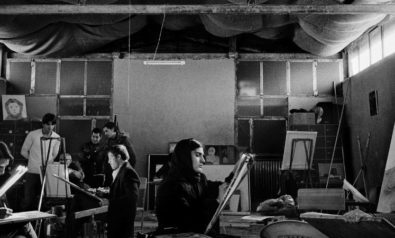


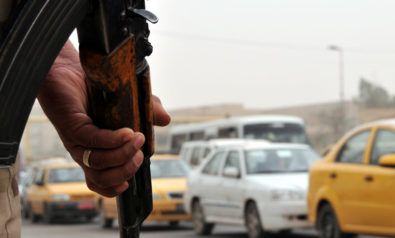
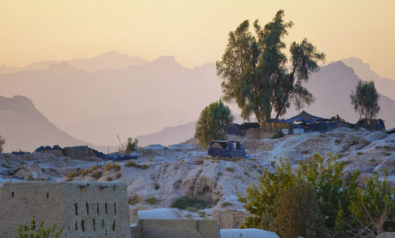
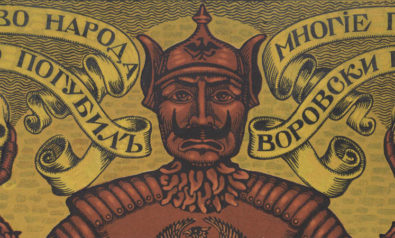


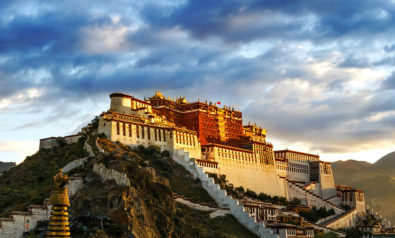






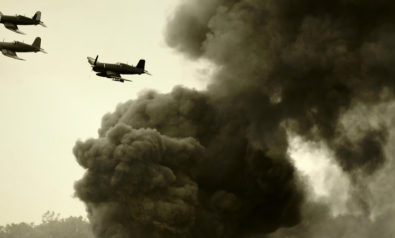
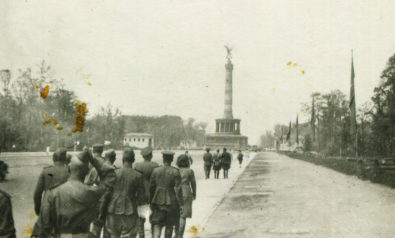






Comment